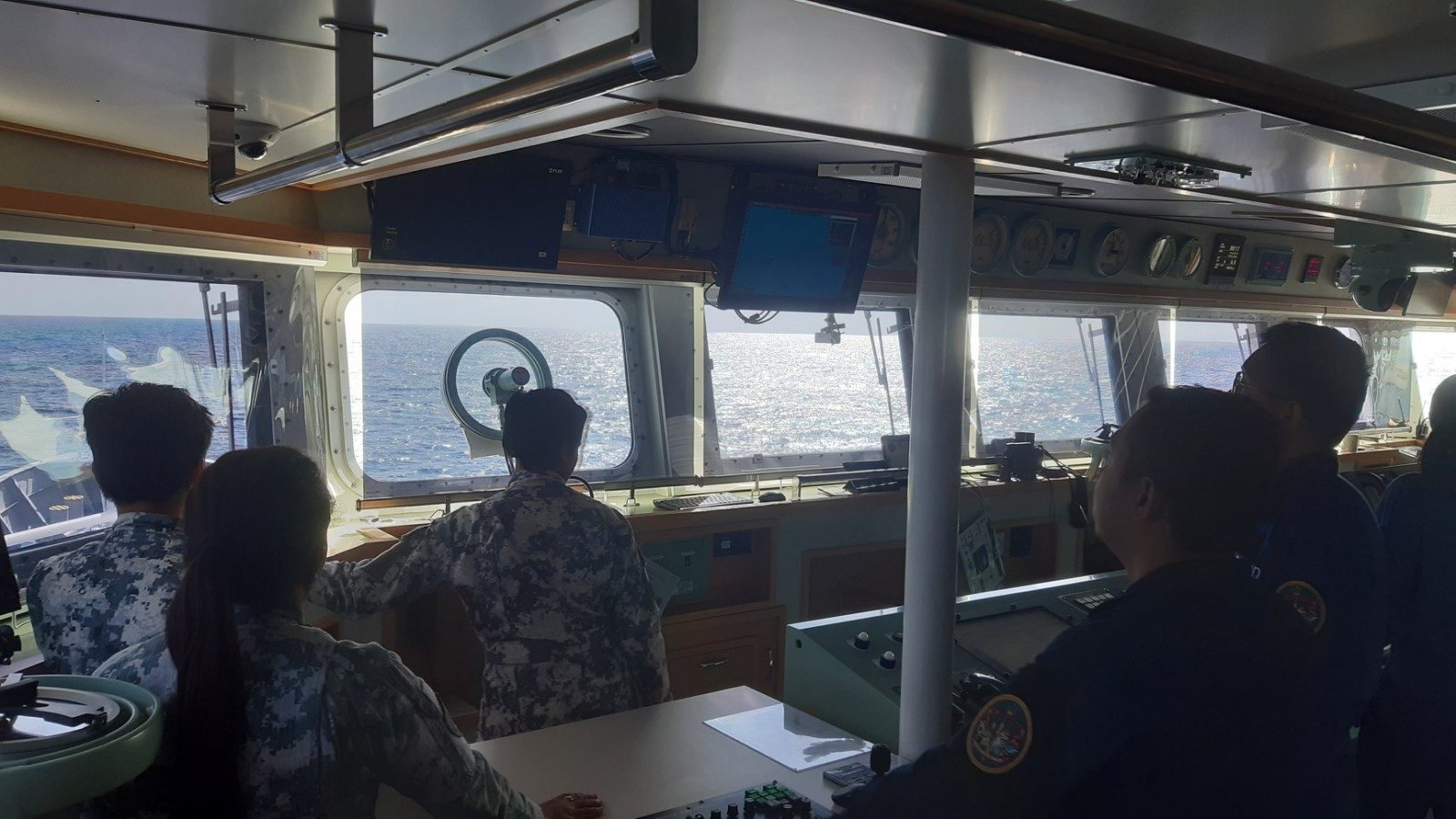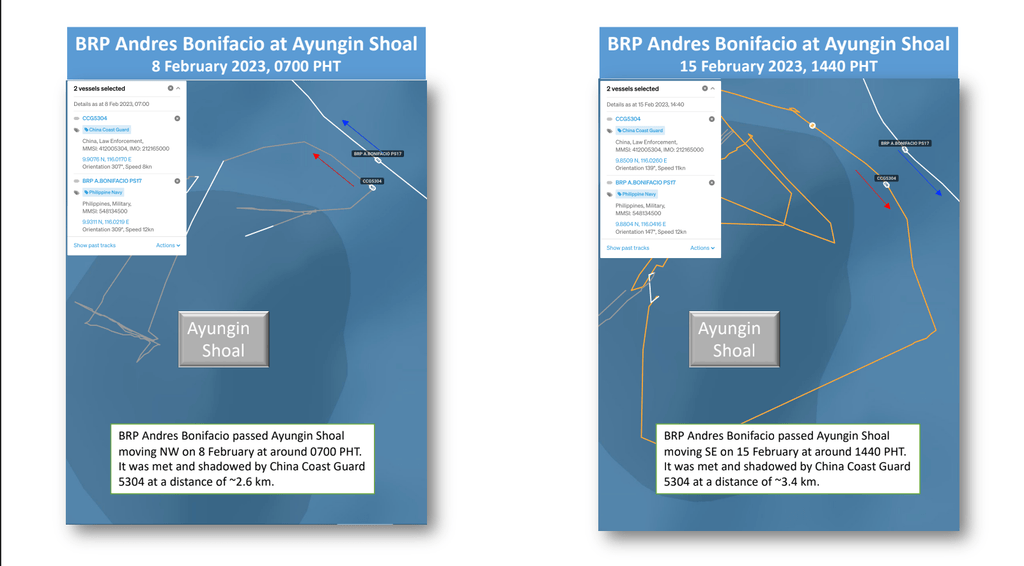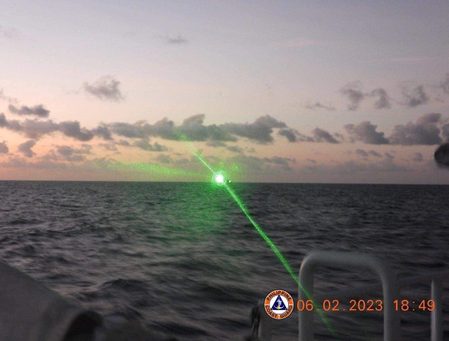SUMMARY
This is AI generated summarization, which may have errors. For context, always refer to the full article.

MANILA, Philippines – The Philippines has continued to step up its presence in the West Philippine Sea, deploying Navy and Coast Guard ships as it faces persistent incursions by Chinese vessels in its waters.
An analysis by Ray Powell, a retired United States Air Force officer who tracked activities of ships in the South China Sea, showed this, with increased Philippine patrols in the month of February captured by maritime tracking data and satellite images.
Powell, who now leads Project Myoushu (South China Sea) at the Gordian Knot Center for National Security Innovation in Stanford University, had earlier tracked the Philippine Coast Guard and China Coast Guard’s movements in the West Philippine Sea this month. The project seeks to track China’s gray zone activities in the South China Sea.
Based on data analyzed by Powell, the PCG and Philippine Navy displayed a noticeable increase in patrols in February compared to the months of January and December. See images of patrols below:
Among Philippine ships known to be deployed were the BRP Andres Bonifacio, BRP Teresa Magbanua, and BRP Malapascua. Areas it patrolled included the Spratlys.
“What you see in this case is the Philippines saying, ‘Look, we’re still showing the flag,’” Powell told Rappler in an interview.
“China is in that place in the Philippines’ EEZ (Exclusive Economic Zone) and the Philippines wants to make sure that China knows the Philippines has not given up on its rights,” he added.
Why it matters
Increased Philippine patrols in the West Philippine Sea comes as China has established a near-daily presence around five key features in the South China Sea. Three of these features – Ayungin Shoal, Scarborough Shoal, and Pag-asa Island – are in the West Philippine Sea.
Ayungin Shoal or Second Thomas Shoal is near the area where the China Coast Guard deployed a military-grade laser against the BRP Malapascua last February 6. The incident was the latest to flare tensions in the volatile area, prompting President Ferdinand Marcos Jr. to summon Chinese Ambassador to the Philippines Huang Xilian to Malacañang.
The Department of Foreign Affairs (DFA) had also protested Beijing’s moves, calling it “acts of aggression.”
Powell said that recent patrols in the West Philippine Sea saw the BRP Bonifacio pass by Ayungin Shoal both on its way to and returning from Pag-asa Island, where it stayed for six days in early February.
“It’s important every once in a while to just go out and sail by with your navy ship. The Philippines is not trying to escalate; they’re not sending the frigates. They’re sending a comparable ship to go and make a simple statement that the Philippine has not given up on their rights to this,” he said.

The Philippine military’s Western Command (Wescom) in Palawan said that despite the recent incident near Ayungin Shoal, where the BRP Malapascua had been supporting a navy resupply mission, the Philippine Navy continued to maintain its presence in the area.
“Our Philippine Navy vessels are still carrying out our maritime and sovereignty patrols round the clock as part of the AFP’s mandate,” said Wescom spokesperson Commander Ariel Coloma.
On Friday, February 17, the PCG said it strengthened and increased its presence and operations in the West Philippine Sea, deploying the BRP Magbanua to the Kalayaan Island Group for patrols last January 28.
During this rotation, the BRP Magbanua offered assistance to Filipino fishermen out in the high seas. On February 9, it also directed a Vietnamese-flagged fishing vessel found in Recto Bank to leave the Philippines’ EEZ.
“The foreign fishing vessel, upon seeing the deployment of RHIBs, secured its lines and immediately departed Recto Bank escorted by MRRV-9701,” the PCG said in a statement.
It added: “As the PCG steadily strengthens and increases its Maritime Patrol, Search and Rescue, and Law Enforcement operations in the WPS, it remains firmly committed to safeguarding Philippine interests and rights within the bounds of international law and conventions.” – Rappler.com
Add a comment
How does this make you feel?

















There are no comments yet. Add your comment to start the conversation.